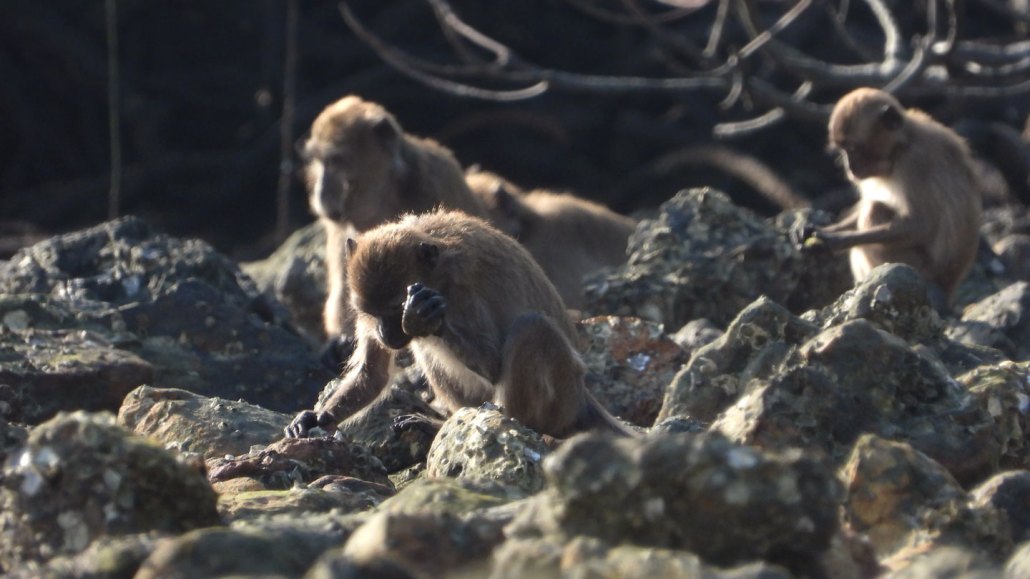Some monkeys accidentally make stone flakes that resemble ancient hominid tools
The find suggests some Stone Age cutting tools were products of chance, not planning

In Thailand, long-tailed macaque monkeys (shown pounding open oil palm nuts with rocks) inadvertently bash off pieces of stone, raising questions about whether some of the earliest known hominid tools were made on purpose.
Lydia V. Luncz